House Marching, 1961
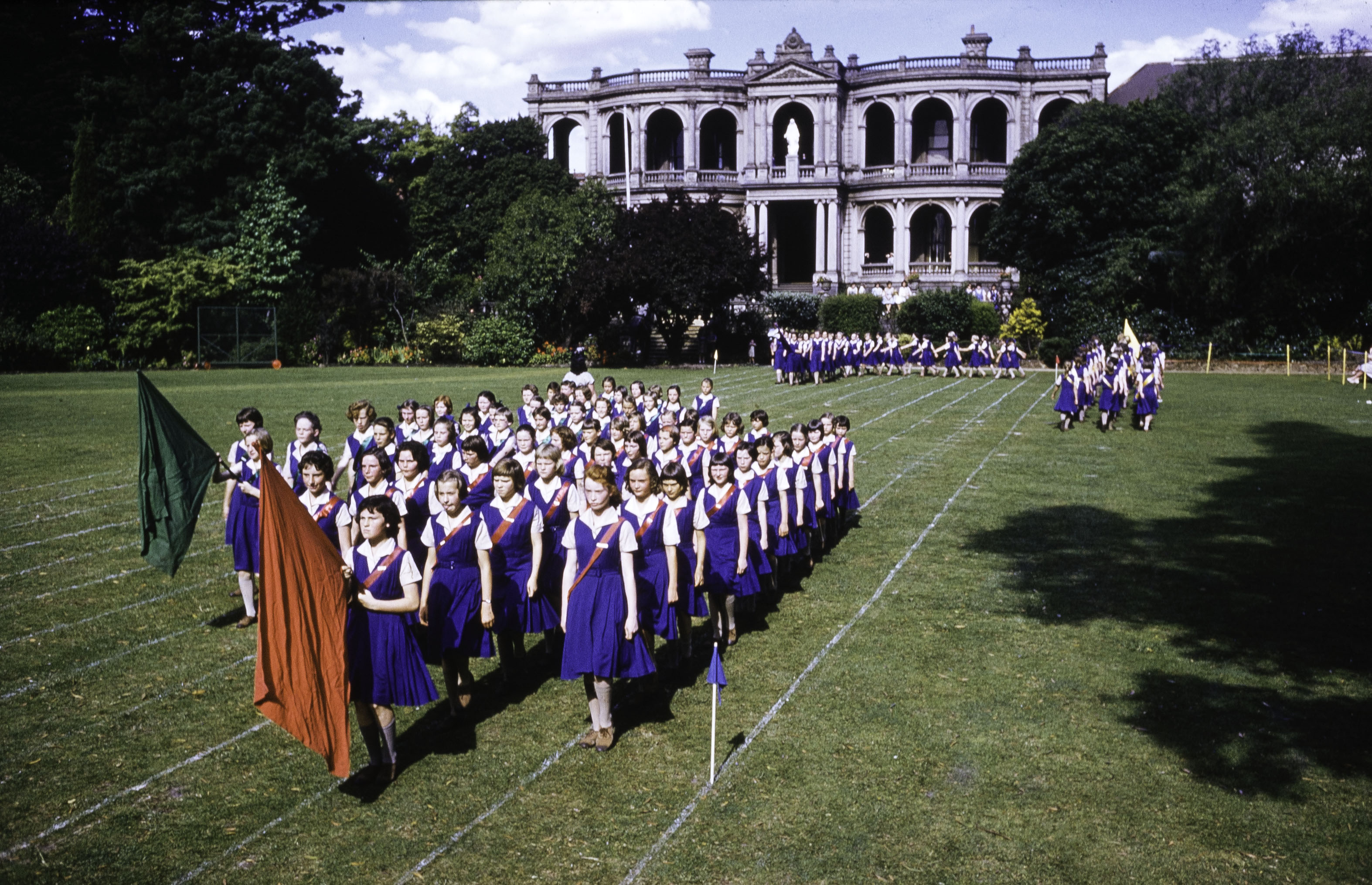
Students representing Mornane and Mulhall in front, Ward and Barry in the back.
In 1960, the umbrella tree that had stood for more than a century was transplanted from the centre of the front lawn to the side of the grotto. The decision to move the tree was based on the pressing need to create more room for the growing numbers of students participating in sporting activities. This beautiful and unusual tree, beloved by generations of Loreto girls, was an American weeping elm grafted to the trunk of an English elm. It was one of the finest examples of tree-grafting in Australia. Advice was sought, as immense care needed to be taken to transplant such a large tree. To remove the tree, a deep, wide trench was dug around the roots by a team of fathers over the course of two weekends. The trench was filled with water for many weeks. Then tree specialists were engaged, and using a crane they carried the tree to its new site and placed it in a trench which was frequently watered. The tree, possibly the largest to be transplanted in Melbourne at that time, initially showed every sign of surviving and both sporting enthusiasts and tree lovers were happy. However, after a few months the tree slowly wilted and died. Gradually the sadness of this icon’s passing gave way to the happiness brought by expanded senior sports days, combined house marching, junior picnics and ballet displays, when the girls in their coloured frocks danced across the floodlit lawn. A highlight occurred in 1963 when a member of the Australian Staff College, Brigadier Charles Long, father of Prudence, officiated for the figure marching and salute during the opening of the senior school sports.
In 1960 the house system was changed and expanded to accommodate the increasing number of students. From 1938 until 1959 there were three house teams: St Teresa, St Gertude and St Michael. These were named after members of the early community: Mother Teresa O’Sullivan, Mother Gertrude Mooney and Mother Michael Gibson. In other Australian Loreto schools the house team names were synonymous with the Loreto Order in Australia. Mother Assumpta Winship followed this approach. At Loreto Toorak after 1960 they were named ‘Barry’ after Mother Gonzaga Barry, the first Provincial Superior of Australia; ‘Mornane’, after the first Loreto-educated Australian postulant, Mother Stanislaus Mornane; ‘Mulhall’, after Mother Stanislaus Mulhall, the second Australian Provincial Superior; and ‘Ward’, after the founder of the Institute of the Blessed Virgin Mary, Mary Ward. This was the first time that Mary Ward was publicly acknowledged as an integral part of the tradition of Loreto Toorak. Increasing the number of houses created new leadership roles and expanded not only inter-house sporting events but extended the range of co-curricular house activities.
|
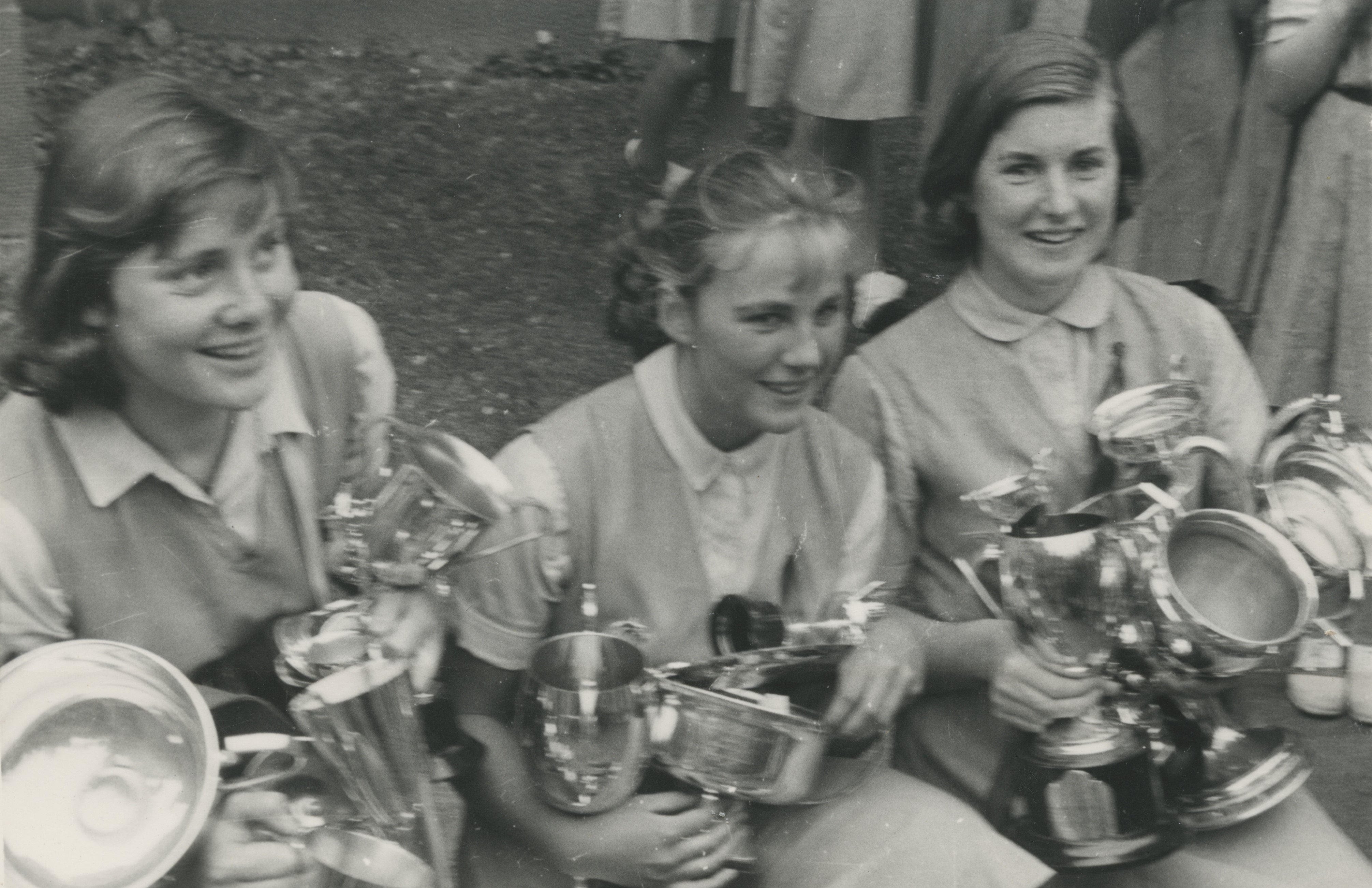
House Sports Captains Diana King (St Gertrude),
Diana Lord (St Michael) and Diana
Bowen (St Teresa), 1957
|
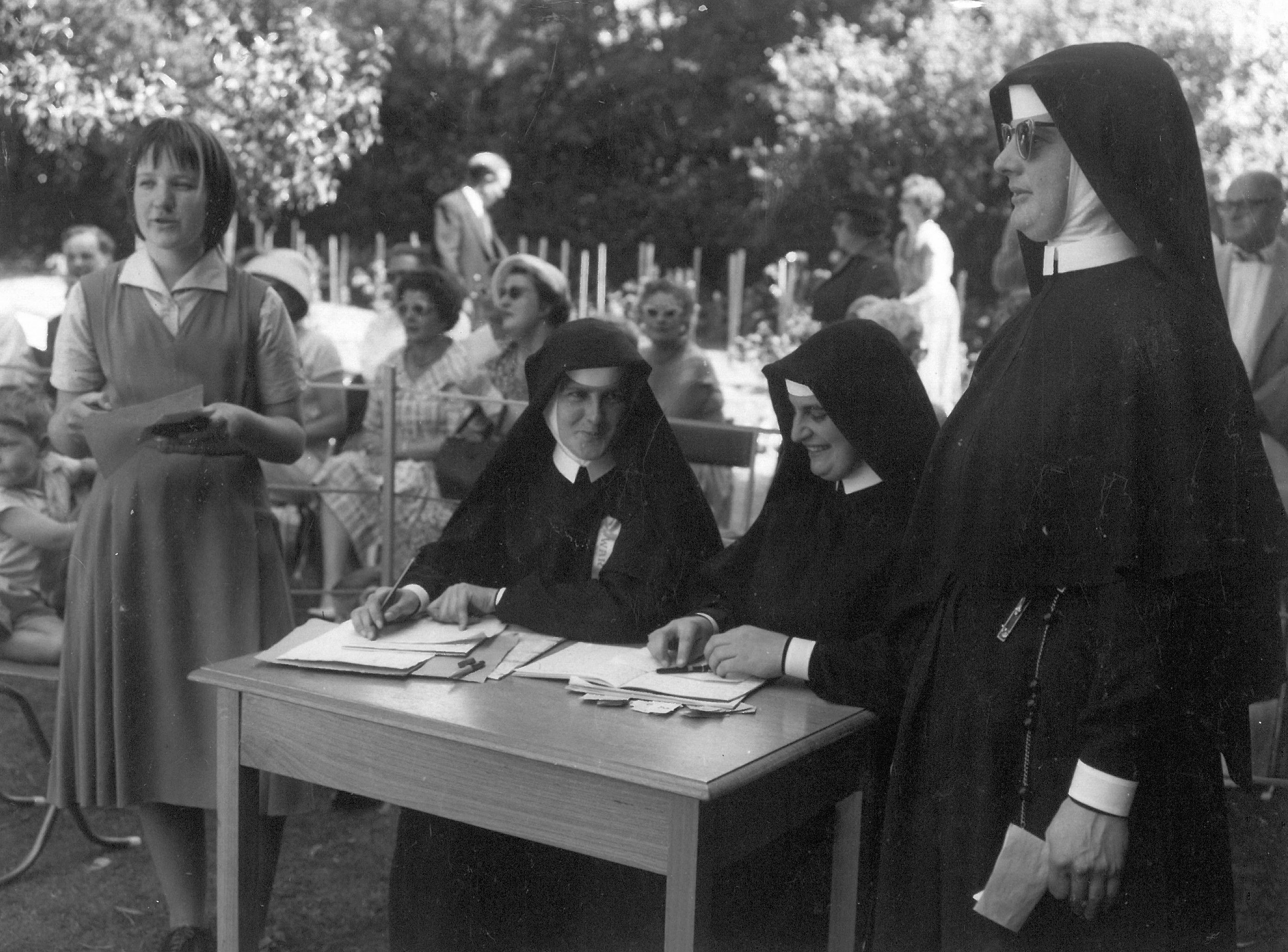
Mary Keenan with Sr Jennifer Collins ibvm,
Sr Toni Matha ibmv and Sr Patricia
Ziebarth ibvm, sports day, 1960s
|
|
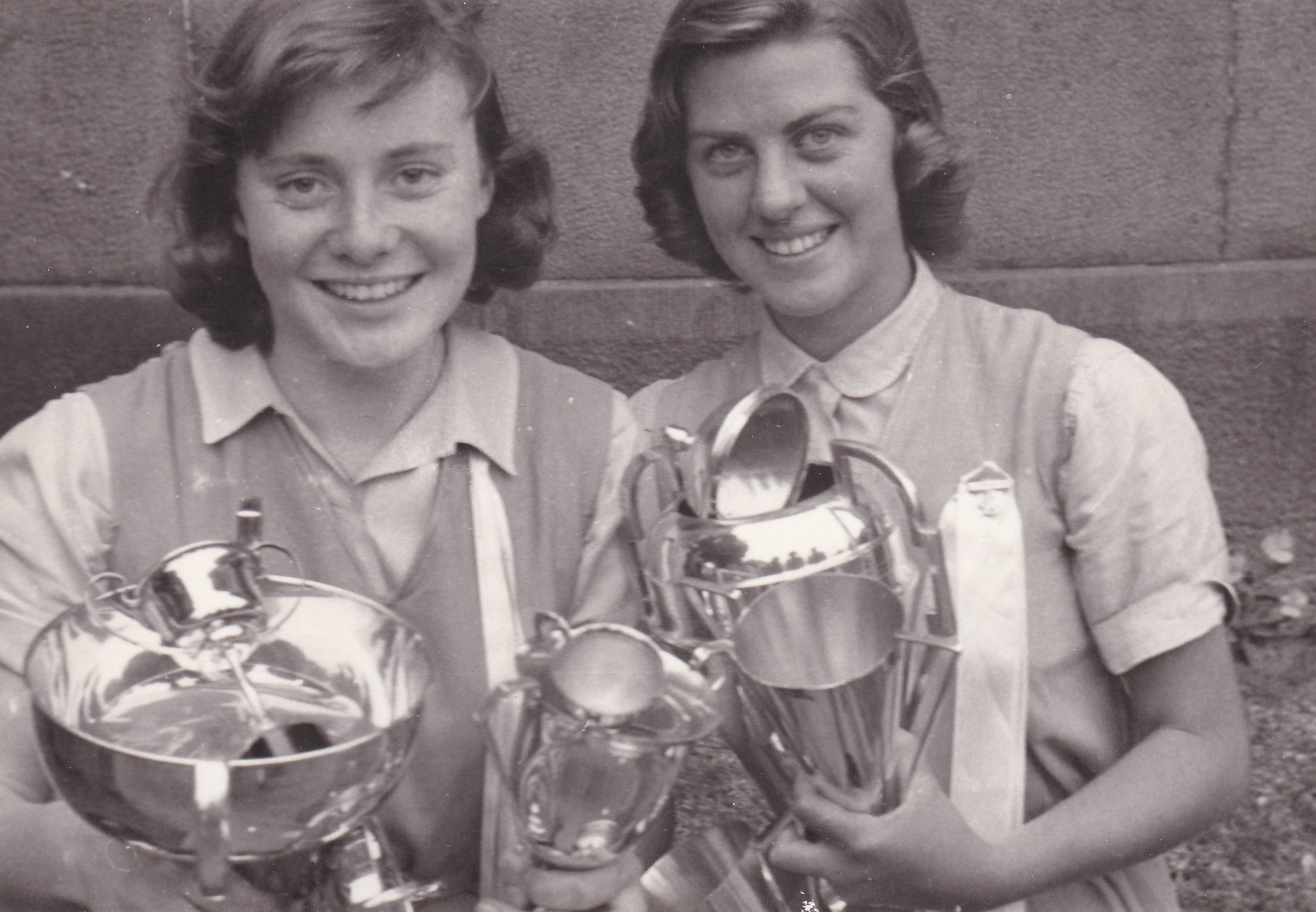
Di King and Norma Daley with their winnings, 1957
|
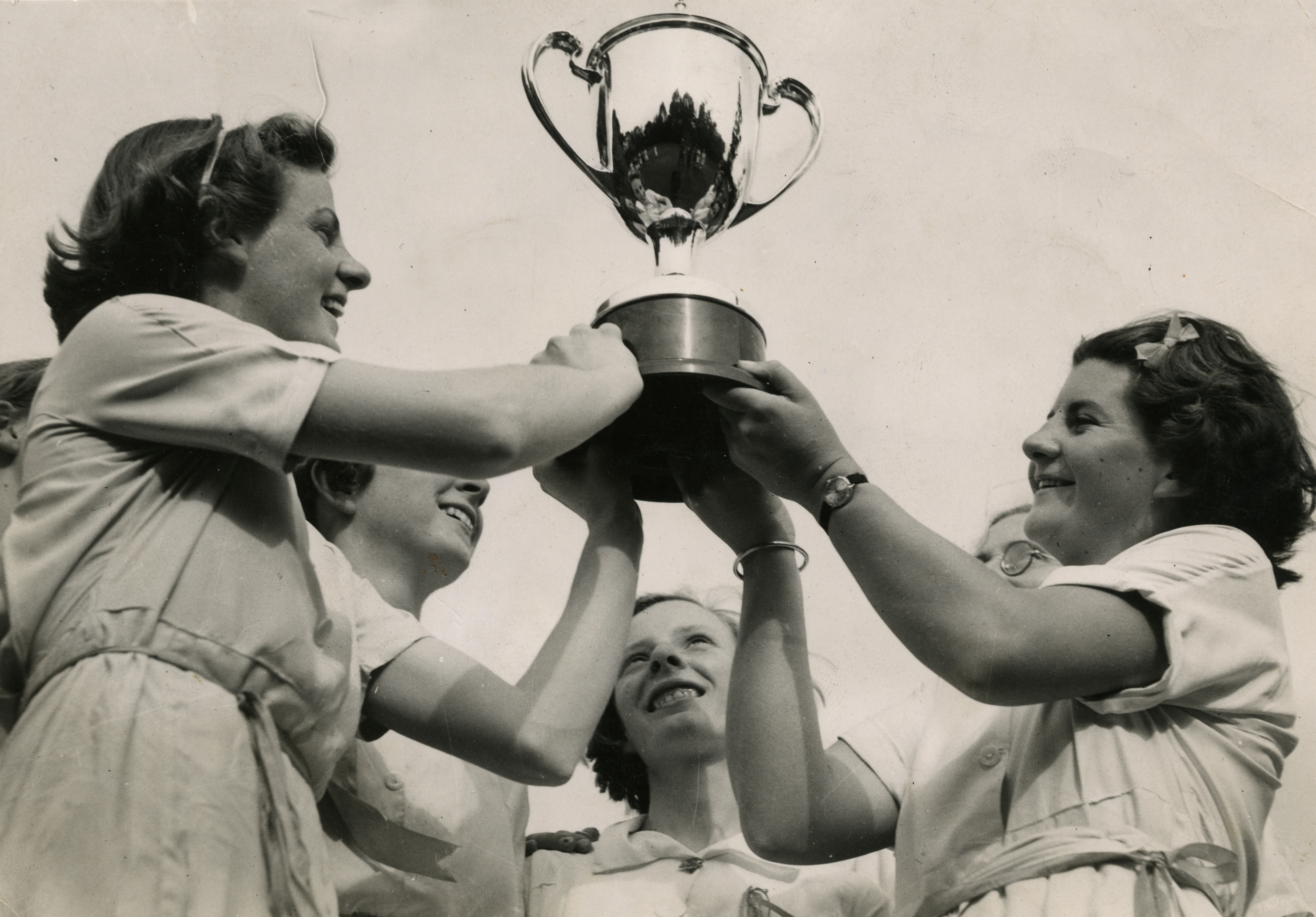
Meida Manly and Peggy Chapman
holding aloft the Mother Provincial
O’Sullivan Cup, 1937
|